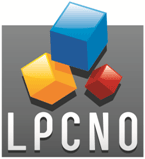Directed deposition of quantum dots by Convective Self-Assembly
NANOSCIENCE

Lab: LPCNO
Duration: NanoX master Internship (8 months part-time in-lab immersion)
6 months full-time internship
Latest starting date: 01/02/2024
Localisation: Nanotech team at LPCNO, located on the INSA campus (Toulouse)
Supervisors:
Giuseppe BONIELLO, MCF boniello@insa-toulouse.fr
Laurence RESSIER, Prof. ressier@insa-toulouse.fr
This research master's degree project could be followed by a PhD
Work package:
The ability to assemble nanoparticles into specific locations is fundamental for any application which requires miniaturization in functional devices, such as sensing, plasmonics, anticounterfeiting, or micro- and nano-electronics.
A suitable experimental method for particle deposition is Convective Self-Assembly (CSA). CSA involves the translation of a meniscus of colloidal suspension on a solid substrate. A combination of convective flows induced by evaporation and attractive capillary forces at the triple line between air, substrate and colloidal solution ensures accumulation of particles in this zone and assists deposition [1]. This technique allows to assemble mono- and multi-layers, 1-D and 2-D patterns of colloidal particles within a large range of sizes [2, 3]. While the assembly of particles in aqueous solution is already addressed and understood, the behavior in non-polar solvents was just recently taken on in our group. In this framework, the main objective of this internship will be to study the deposition by CSA of quantum dots in non-polar solvents and in liquid crystals onto bare, functionalized and/or patterned substrates. Different kinds of quantum dots will be considered in the experiments in terms of size, shape and material.
The candidate will work in a clean room and will have access to various microfabrication techniques (photolithography, nano-imprint lithography, laser lithography…) to create chemically, electrically and topographically functionalized surfaces. She/he will deposit quantum dots by CSA technique; analyze the assemblies by fluorescence microscopy, optical interferometry, atomic force microscopy (AFM), and scanning electron microscopy (SEM); discuss with scientists performing numerical simulation (as a part of ongoing collaborations with LGC – Toulouse) to address the research and understand the results. All the experimental set-ups are available on site.
Depending on mutual appreciation, the internship can be followed by a PhD position (3 years) on the same topic.
References:
[1] Malaquin, L., Kraus, T., Schmid, H., Delamarche, E. and Wolf, H., 2007. Controlled particle placement through convective and capillary assembly. Langmuir, 23(23), pp.11513-11521. doi.org/10.1021/la700852c
[2] Farcau, C., Sangeetha, N.M., Moreira, H., Viallet, B., Grisolia, J., Ciuculescu-Pradines, D. and Ressier, L., 2011. High-sensitivity strain gauge based on a single wire of gold nanoparticles fabricated by stop-and-go convective self-assembly. Acs Nano, 5(9), pp.7137-7143. doi.org/10.1021/nn201833y
[3] Teulon, L., Hallez, Y., Raffy, S., Guerin, F., Palleau, E. and Ressier, L., 2018. Electrostatic directed assembly of colloidal microparticles assisted by convective flow. The Journal of Physical Chemistry C, 123(1), pp.783-790. 10.1021/acs.jpcc.8b08981
Areas of expertise:
Nanoparticles, quantum dots, directed assembly, microfabrication, nanoxerography
Required skills for the internship:
The successful candidate is completing a MSc in physics, nanoscience, nanotechnology and/or material science. Having experience in microfabrication and working in clean room is a plus; in any case, training on experimental techniques will be carried out during the internship. Moreover, she/he should be dynamic, autonomous, and taking initiative. Good level of written and verbal English is required.
